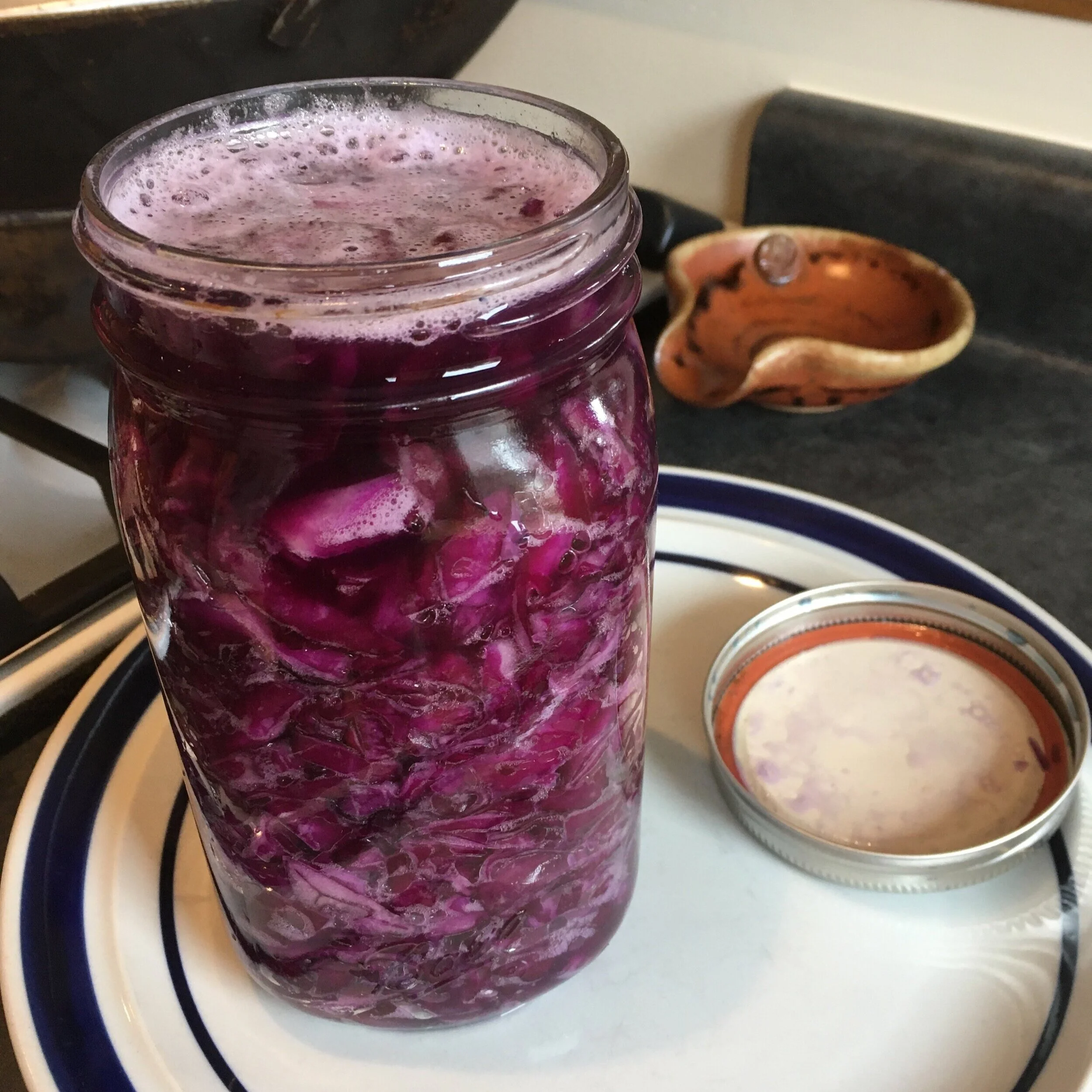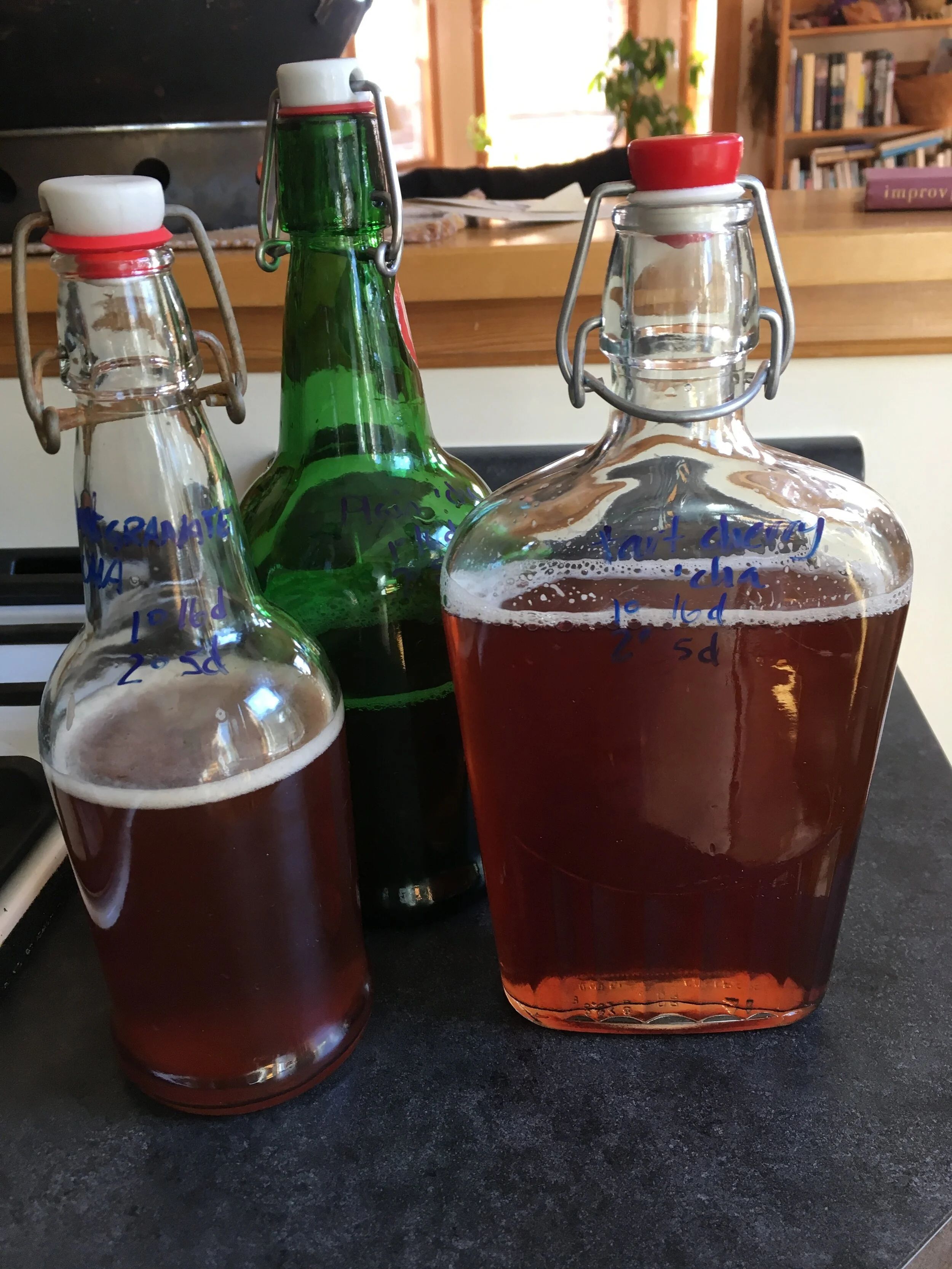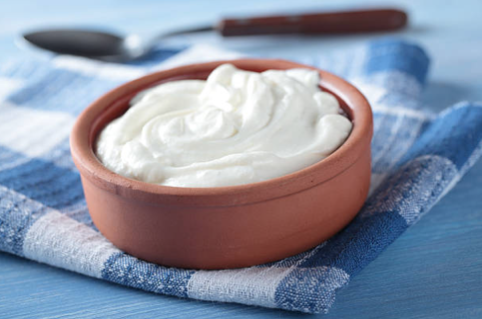Fermentation
Welcome to the wonderful world of edible microbiology!
Would you like to preserve the bounty of Maine’s wonderful Farmer’s Markets? Would you like to learn about what’s really going on down there? How do you encourage the right environment for your ferment and how do microbes from the outside interact with our insides? What is our microbiome and why should we care about it’s health? Join a workshop to explore the delicious and interesting world of fermentation-friendly microbes, and how our digestion and overall health benefits from our symbiotic relationship with microorganisms. Bonus link to Michael Sargent’s (psychology professor at Bates College) podcast interview “Gut Check” with genetic epidemiologist Tim Spector talking about nutrition and microbiome. Food choices are NOT one-size-fits-all.
Would you like to take a class? Join me in Portland or online March 2026 to learn how easy it is to ferment.
SAUERKRAUT
A easy and delicious cabbage ferment that lasts in your fridge and gets better with time. Fermenting the cabbage preserves the vitamin C, and increases flavor and nutritional value by microbial fermentation. The recipe is linked. You can also purchase and stream a workshop video I created ($20), and do it whenever it suits your schedule.
Kimchi
Kimchi is a vegetable ferment associated with Korean cuisine. Almost anything can be kimchi’d but the most common variety involves napa cabbage, other vegetables, garlic, ginger, fish sauce, and mild-to-kick-butt red pepper (Korean gochuchang). The resulting funky ferment can be used interchangeably with sauerkraut, added to soups or almost anywhere a dash (or bucketful) of umami is needed. Recipe is linked.
Kombucha
Kombucha is a probiotic beverage and can be an expensive habit. But with black tea, sugar, a culture called a SCOBY, and some time and care, it’s very economical to make. And you can get creative with your own personal flavors. Let me know if you need a SCOBY - I can get one to you! Recipe is linked. You can also purchase a 20 minute video which demonstrates primary and secondary (flavored) fermentations, and get going right away.
Milk Kefir
Kefir hails from the Caucasus, and is uniquely organized into cottage cheese-like grains. One of the simplest and friendliest ferments - it operates happily in a jar of milk on the counter at room temperature, and could be thought of as a drinkable yogurt. It’s a tangy substitute for milk or yogurt in any recipe or beverage. Kefir has been touted as a cure-all for everything, and delving more deeply into the science reveals that some of these claims are not unfounded. Kefir may be one of the reasons that people from the Caucasus are some of the healthiest and longest-lived in the world.
Yogurt
Yogurt is a dairy ferment that originated in warmer climes. The culture needs a constant temperature of about 110F/40C for a number of hours (5-8) to encourage the right populations of successive microorganisms to rise and fall, and create the delicious tart and firm substance we all know and love. The temperature requirement makes yogurt a slightly finicky culture in North America, but it’s totally doable with the right attitude and equipment.
Afterword…
Left to itself, everything organic rots. Since the word is not sterile, we are surrounded by naturally occurring “wild and local” bacteria and yeasts that eventually inhabit and settle on everything, waiting for it’s chance to break things down to simpler materials. Fermentation is the ‘controlled rotting’ or breakdown, of carbohydrates or proteins in organic materials, releasing alcohols, acids and other byproducts of microbial metabolism from the substrate (wheat, grapes, milk etc.) Local bacteria and yeast populations release particular byproducts, resulting in specific flavors and textures, imparting “terroir”. This is incredibly important to the food industry and cultural identity, as vintners in the Champagne region of French wine country, Balsamic vinegar producers of Modena or San Francisco sourdough bakers will tell you.
These workshops that focus on carbohydrate fermentation. We’ll talk about foods containing high quantities of carbs such as fruits, vegetables, milk and grains. Anything that contains carbohydrates will ferment, and almost all food contains carbohydrates. Food (organic material) has associated bacteria and yeast that will break it down to its constituents, liberating the molecules for use again in other organisms. Can you imagine if this didn’t happen? We’d all run out of building blocks pretty quickly. Nothing would rot or be returned to the earth - everything would cease to exist.
Luckily, Nature takes care of this by providing a perfect organic recycling method via microbes, and we make use of it when we ferment food.





